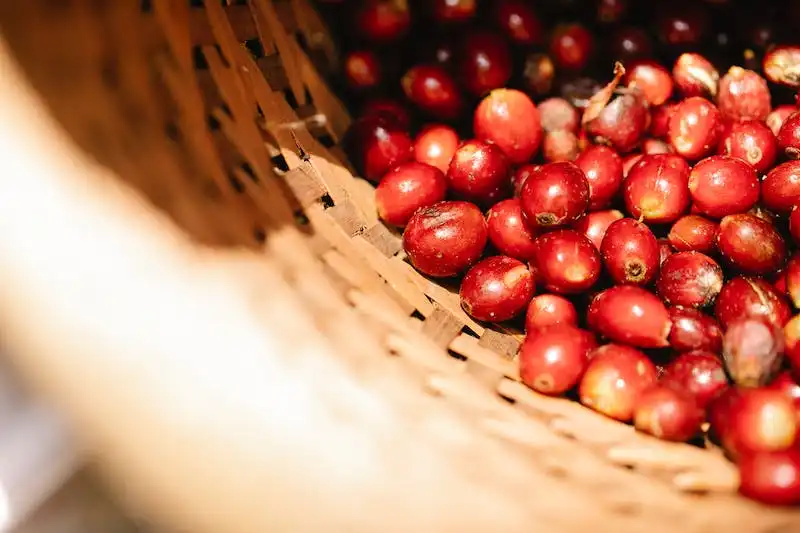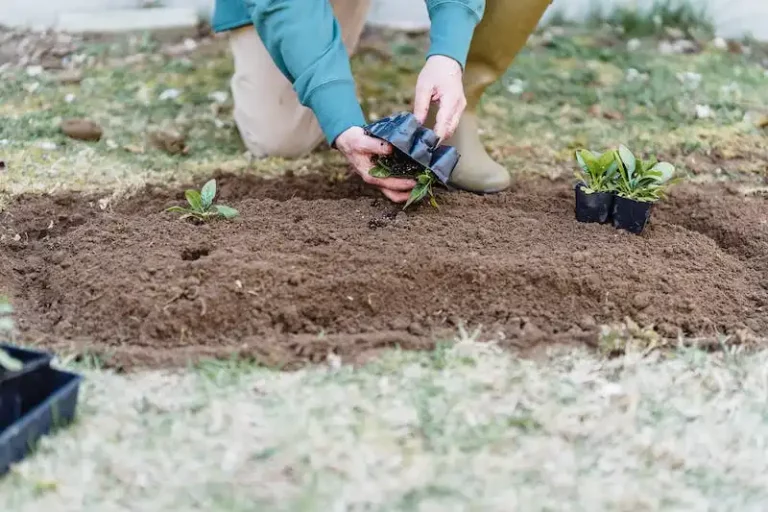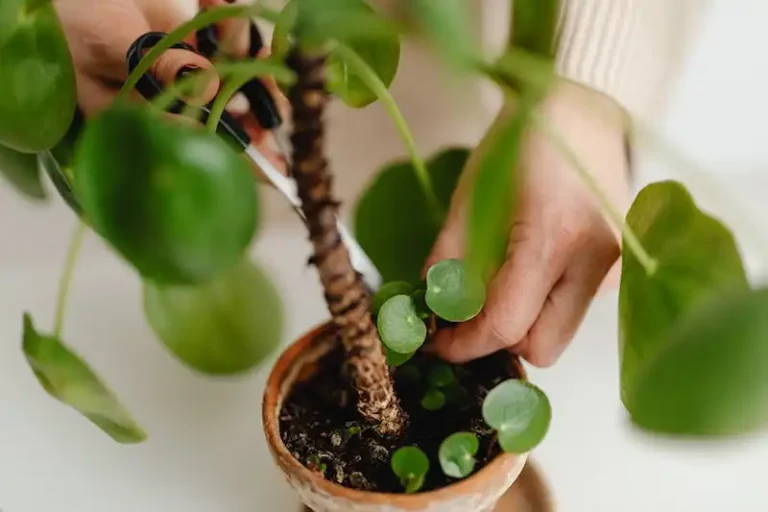Leaf lettuce, also known as Lactuca sativa, belongs to the family Asteraceae. It is an easy-to-grow vegetable that is commonly used in salads. Leaf lettuce is a well-known broad leaf vegetable with origins in the University of Louisiana’s horticultural program. It is characterized by its looseleaf heads that can range in color from green to red.
Growing leaf lettuce is a popular home gardening activity because it is a versatile and nutritious vegetable. It can be planted in the garden or in containers, making it suitable for both large and small spaces. Leaf lettuce is best grown from seeds, which can be sown directly into the soil. The seeds are relatively deep, so it is important to plant them properly to ensure successful germination.
Leaf lettuce is a great option for those looking to add more vitamins and greens to their diet. It is a low-calorie vegetable that is high in fiber and packed with vitamins, such as vitamin A and K. Leaf lettuce can be harvested as soon as the leaves are large enough to use in salads, and it can be stored in the refrigerator for up to a week. When selecting leaf lettuce, choose heads that are well-formed and firm, and avoid wilted or discolored leaves.
In summary, leaf lettuce is an easy-to-grow vegetable that is a great addition to any salad. It is packed with vitamins and nutrients, and can be harvested and stored for later use. Whether you are a seasoned gardener or just starting out, leaf lettuce is an ideal plant to grow in your home garden.
Plant of the Week Lettuce Leaf
Lettuce Leaf, also known as Lactuca sativa, is a member of the daisy family, Asteraceae, and is grown for its tasty and nutritious leaves. It is an easy plant to grow at home, and it is widely used in salads and other dishes for its fresh and crisp characteristics. Lettuce Leaf is a variety of lettuce that forms looseleaf heads, which means the leaves do not form a tight head like other lettuces.
When growing Lettuce Leaf, it is important to select the right variety for your needs. There are many different types of Lettuce Leaf, ranging in color from light green to dark green. Some varieties even have red or purple leaves, adding a beautiful splash of color to your garden. Lettuce Leaf seeds can be sown directly in the garden or started indoors and transplanted later. It is best to sow the seeds in cool weather, as lettuce does not tolerate heat well. Planting should be done about 2 to 3 weeks before the last frost date, and the seeds should be sown about 1/4 inch deep.
When the Lettuce Leaf plants are about 2 to 3 inches tall, they can be thinned to about 8 inches apart to give them room to grow. Lettuce Leaf plants are fairly low-maintenance and only require about 1 inch of water per week. They should be watered deeply but not excessively, and the soil should be kept evenly moist. Lettuce Leaf plants should be harvested when the leaves are tender and crisp. They should be cut at the base of the plant, using a sharp knife or scissors.
In terms of nutrition, Lettuce Leaf is an excellent source of vitamins A and K. It also contains some vitamins C and B6. It is low in calories and high in fiber, making it a healthy choice for salads and other dishes. Lettuce Leaf can be stored in the refrigerator for up to 2 weeks. To store lettuce, wrap it in a damp paper towel and place it in a plastic bag. Another way to store lettuce is to place it in a bowl of water and sprinkle a few drops of lemon juice on top. This will help to keep the lettuce fresh for longer.
In conclusion, Lettuce Leaf is a versatile and nutritious plant that is easy to grow at home. It can be used in a variety of dishes, and it provides a fresh and crisp texture to salads. Whether you are a beginner or an experienced gardener, Lettuce Leaf is a great addition to any garden.
Plant of the Week
The leaf lettuce, also known as Lactuca sativa, is our Plant of the Week. This broad-leaved member of the daisy family is a popular choice for home gardens because of its easy-growing nature and nutritional benefits.
Leaf lettuce is a looseleaf variety, meaning it does not form a tight head like other lettuce varieties. It can be harvested at any stage of growth, from baby leaf to full maturity. The leaves are tender and have a mild, slightly sweet flavor that is ideal for salads.
There are several different types of leaf lettuce, including green and red varieties. Green leaf lettuce has a more mild taste, while red leaf lettuce adds a pop of color to your salad. Both varieties are rich in vitamins and provide a healthy addition to your diet.
Leaf lettuce is quick and easy to grow in the garden. It can be started from seeds, sown directly into the soil, or transplanted from seedlings. It prefers cooler temperatures and can tolerate light frost. Sow the seeds about half an inch deep and keep the soil moist until the seeds germinate.
Once the plants are established, they require regular watering to keep the soil evenly moist. The plants should be harvested when the leaves are large enough to use. Simply cut the outer leaves from the plant, leaving the center intact so it can continue growing.
When storing fresh leaf lettuce, it is best to keep it in a plastic bag in the refrigerator. You can also sprinkle the leaves with water and store them in the refrigerator to keep them crisp and prevent wilting.
Leaf lettuce has a long history of use in culinary exchanges, with mentions of its consumption dating back to ancient times. Today, it is commonly used in salads and as a garnish for various dishes due to its mild taste and attractive appearance.
If you’ve never grown lettuce before, leaf lettuce is an excellent choice to start with. Its versatility, nutritional benefits, and ease of growing make it a popular option for gardeners of all ages and experience levels.
For more information on growing leaf lettuce and other gardening tips, you can visit websites such as PlantVillage, a community-driven platform that provides reliable information on plant physiology, horticultural practices, and agricultural innovations.
So, why not give leaf lettuce a try in your garden this week? It’s a versatile and nutritious green that can add a pop of color to your meals without much effort or experience required.
Leaf Lettuce Latin Lactuca sativa
Leaf lettuce, or Lactuca sativa, is a popular vegetable in the lettuce family and is known for its broad, green leaves. It is a variety of lettuce that can be grown in a garden or purchased at a grocery store. Leaf lettuce is often used in salads because of its fresh and crisp texture.
There are many different varieties of leaf lettuce, ranging in color from green to red. Some popular varieties include Boston, Butterhead, and Romaine. Each variety has its own unique characteristics and flavor. Leaf lettuce is packed with vitamins and nutrients, making it a healthy choice for any salad.
When planting leaf lettuce, it is important to select the right variety for your garden. Some varieties are more heat-tolerant, while others are better suited for cooler climates. Leaf lettuce can be grown from seeds or purchased as young plants from a nursery. It is typically planted in rows or clusters and requires regular watering and fertilizing.
Leaf lettuce is ready for harvesting within a few weeks of planting. It is best to pick the leaves when they are young and tender, as they become more bitter as they mature. Once harvested, leaf lettuce can be stored in the refrigerator for up to a week, but it is best enjoyed fresh.
Leaf lettuce is a versatile vegetable that can be used in a variety of dishes, including salads, wraps, and sandwiches. It can also be cooked and added to soups or stir-fries. The leaves can be torn or shredded to add texture to a dish, or left whole for a more substantial salad.
If you are interested in growing leaf lettuce in your own garden, there are many resources available to help you get started. The University of Louisiana Agricultural Center provides educational information on planting and growing leaf lettuce, as well as tips on selecting the best variety for your climate. Websites like PlantVillage also offer horticultural information and tips for successful leaf lettuce cultivation.
In summary, leaf lettuce is a popular and nutritious vegetable that is easy to grow and harvest. With its broad, green leaves and crisp texture, it is a favorite choice for salads and other dishes. Whether you choose to grow your own leaf lettuce or purchase it from a grocery store, you will be adding a healthy and flavorful ingredient to your meals.
Leaf Lettuce Characteristics
Leaf lettuce, also known as Lactuca sativa, is a vegetable that belongs to the lettuce family. It has several characteristics that make it a popular choice for salad lovers. The leaves are typically broad and have a rich green color, although some varieties can also be red or even purple.
One of the main characteristics of leaf lettuce is its ability to grow quickly and easily. It can be sown directly in the garden from early spring until late summer. Leaf lettuces are also known for their resistance to heat and frost, which makes them a great option for both cool and warm climates.
When choosing leaf lettuce for planting, it’s important to select varieties that are well-suited for your growing conditions. Some popular types include looseleaf lettuce, romaine lettuce, and butterhead lettuce. Each type has its own unique characteristics, so do some research to find the best variety for your garden.
Leaf lettuce is packed with vitamins and nutrition, making it a healthy addition to any diet. It is a rich source of fiber, vitamin K, and vitamin A. It is also low in calories, which makes it a great option for those looking to maintain a healthy weight.
Harvesting leaf lettuce is a simple process. You can pick the outer leaves as soon as they are large enough to eat, or you can wait until the entire head has formed. To harvest, simply cut the outer leaves off at the base of the plant. The plants will continue to grow and produce new leaves, allowing for multiple harvests throughout the growing season.
Leaf lettuce can be stored in the refrigerator for up to a week without wilting. To store, rinse the leaves under cold water and pat dry with a paper towel. Place the leaves in a plastic bag or airtight container and store in the refrigerator until ready to use.
If you’re looking for more information on leaf lettuce, there are several educational resources available. PlantVillage and university agricultural exchanges are great places to find tips for planting, growing, and harvesting leaf lettuce. They can also provide information on the best varieties for your specific region.
| Characteristics | Information |
|---|---|
| Scientific Name | Lactuca sativa |
| Plant Type | Leafy Vegetable |
| Origins | Europe and Mediterranean |
| Best Planting Time | Early spring to late summer |
| Growing Season | Spring and Fall |
| Preferred Soil | Well-draining soil with plenty of organic matter. |
| Harvest Time | From 6 to 8 weeks after sowing. |
| Harvest Method | Pick individual leaves or cut the entire head. |




